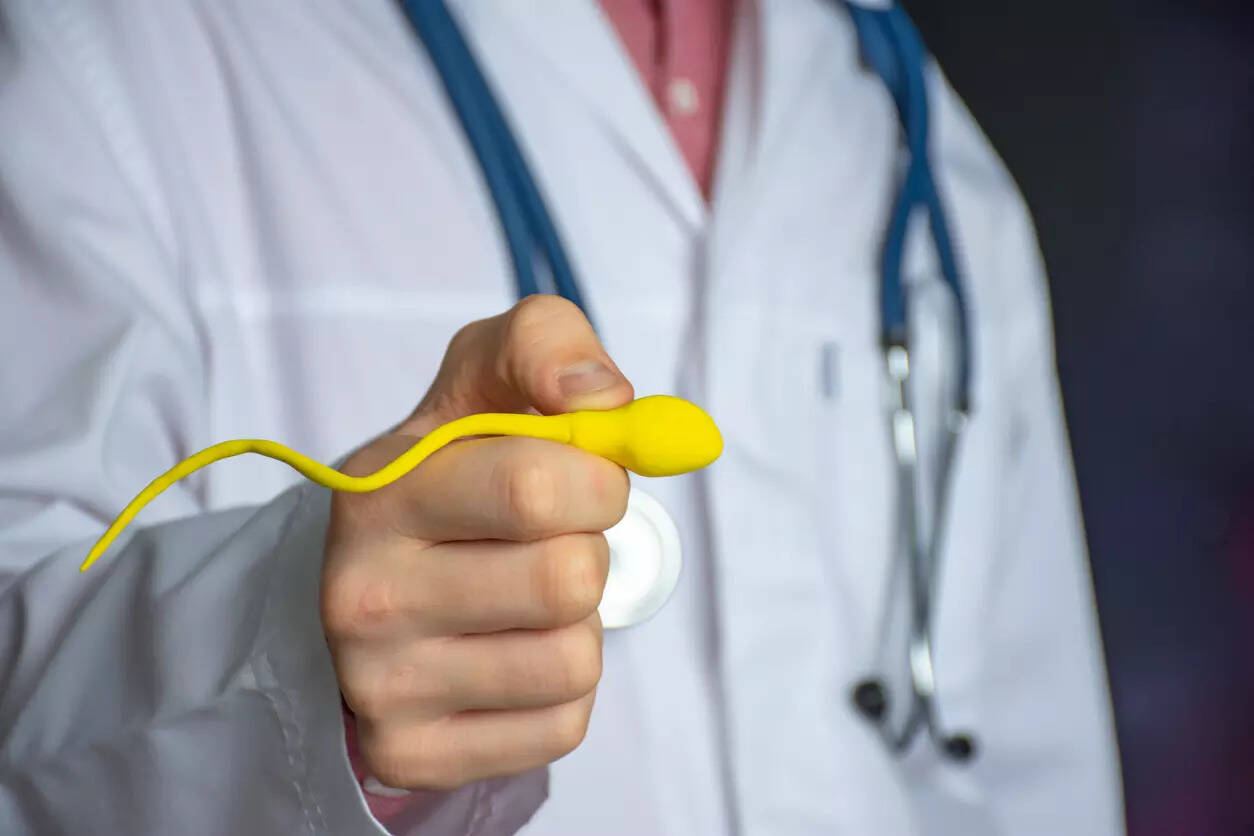
New Delhi: Male infertility is quietly escalating right into a public well being disaster in India, but stays among the many most below-mentioned medical situations within the nation. With conventional masculinity nonetheless tied to bodily power and social expectations, the topic of male reproductive well being is simply too usually buried below layers of stigma, misinformation, and silence.
Startling information reveal that solely 25 per cent of Indian males meet regular semen parameters—which means 75 p.c face points associated to semen quantity, sperm depend, motility, or morphology. Male-factor infertility accounts for practically 40–50 p.c of all infertility circumstances in India, supported by research from the Indian Society for Assisted Replica (ISAR) and Nationwide Medical Journal of India. These findings emphasise the vital want for a shift in focus in the direction of male infertility, as it’s a important contributor to the general infertility charges within the nation. This concern takes on added urgency because the nation observes Nationwide Infertility Consciousness Week, aiming to make clear the challenges of infertility and the significance of inclusive reproductive well being conversations.
“The dialog round infertility nonetheless facilities closely on girls. We urgently want a shift towards inclusivity and science-backed consciousness,” says Dr. Prachi Benara, Senior Advisor and Centre Head at Birla Fertility & IVF.
“Probably the most alarming contributors to declining sperm well being is the unregulated use of anabolic steroids and fitness center dietary supplements. Within the race for fast muscle beneficial properties and social media-worthy physiques, many younger males are unknowingly compromising their fertility,” Dr. Benara added. Even a couple of months of steroid use can carry sperm depend right down to zero.
“Most over-the-counter dietary supplements in India don’t disclose their substances correctly. Many males fall prey to quack recommendation or misguided fitness center trainers,” she warns. Worse, some males unknowingly take testosterone injections, which may shut down pure sperm manufacturing.
Past dietary supplements, a number of different life-style components are contributing to the decline: tobacco use, poor weight loss plan, excessive BMI, sedentary work, and elevated age. Whereas girls face a organic clock, males expertise a extra gradual reproductive decline known as andropause. Research present sperm high quality begins to considerably deteriorate after the age of 40—a problem for a lot of city males delaying parenthood.
Information Deficit and Diagnostic Gaps
Regardless of the rising menace, India lacks complete information on steroid-linked infertility. Most males don’t disclose complement use except instantly requested, making it tough to hint the foundation reason behind fertility points. Nevertheless, consultants consider early testing—particularly semen evaluation—is essential.
Clinicians assess 4 key parameters: quantity, depend, motility, and morphology. Ideally, a pattern ought to have greater than 1 ml of semen, over 16 million sperm/ml, 40 p.c motility, and a morphology rating above 4 p.c. But, just one in 4 Indian males meets these benchmarks.
The excellent news: restoration is feasible. If steroid use is discontinued inside a 12 months, many males present important enchancment in sperm high quality inside six months, she said.
One other hidden side of male infertility is the problem of non-consummation of marriage, usually as a consequence of psychological situations like vaginismus or erectile dysfunction. “As much as 90 p.c of such circumstances enhance with dialog and counseling alone,” Dr. Benara provides. At Birla Fertility, preliminary consultations last as long as an hour and prioritize psychological well being and emotional effectively-being earlier than recommending diagnostics or IVF.
“Many {couples} don’t want IVF immediately. What they want first is somebody to pay attention—with out judgment,” she says.
With India’s Complete Fertility Fee (TFR) dipping to 1.99—under the substitute stage—the implications of untreated infertility loom massive. Nevertheless, the rise of expertise and affordability is bringing hope.
Immediately, an IVF cycle prices ₹1.7–1.75 lakh, down from ₹2.5–3 lakh, and EMI choices are broadly out there. Some employers have even began together with IVF in insurance policy. Superior applied sciences like AI-assisted lab procedures and microfluidics are enhancing outcomes. Whereas CRISPR and genome enhancing will not be but utilized in Indian IVF, DNA-high quality assessments are rising as the following frontier.
The Street Forward: Substitute Silence with Science
India is at a crossroads. With out proactive steps, the socio-financial fallout of untreated infertility might mirror ageing societies like Japan and South Korea. Between the ages of 35 and 50—coincidentally peak profession years—many Indians are additionally at peak fertility threat.
With out proactive steps, the socio-financial fallout of untreated infertility might mirror ageing societies like Japan and South Korea. Between the ages of 35 and 50—coincidentally peak profession years—many Indians are additionally at peak fertility threat.
“This dialog must evolve—from one crammed with worry and disgrace to at least one grounded in empathy, training, and empowerment,” says Dr. Benara.
The stigma should finish. Science should converse. And the silence round male infertility should lastly be damaged.
Source link
#Steroids #Sperm #Count #Decline #Stigma #India #Faces #Silent #Male #Infertility #Crisis #HealthWorld





